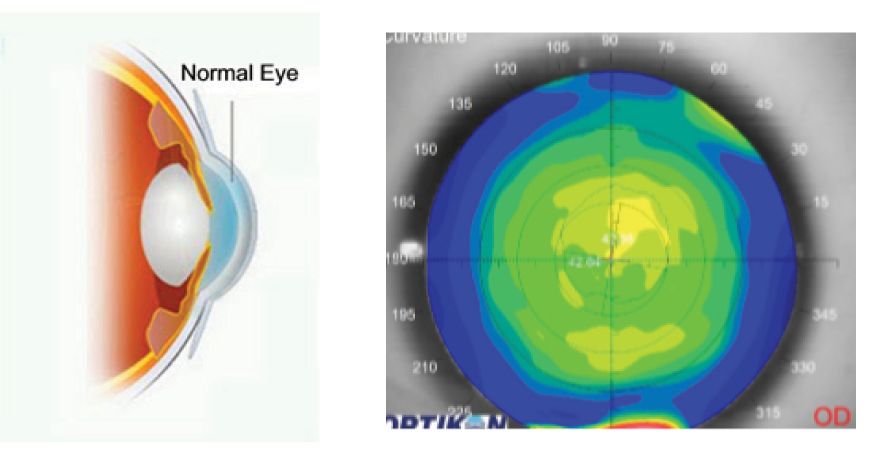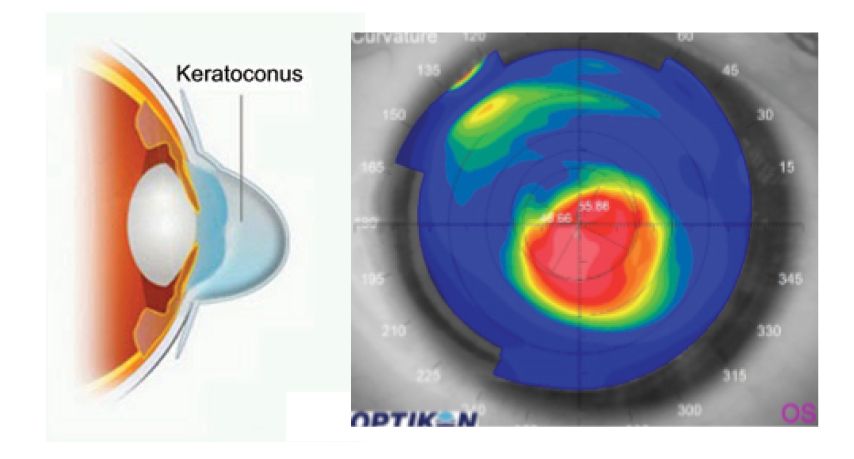Corneal topography
By Gisela Steyn - B.Optom UJ(SA) CAS(SA)
What is a corneal topography?
Corneal topography is a diagnostic tool that provides us with a detailed description of the front surface of the eye, called the cornea. This tool creates a three-dimensional map of the surface curvature and shape characteristics of the cornea. The greatest advantage of corneal topography is its ability to detect an irregular corneal curvature for example: corneal astigmatism or keratoconus. It also allows us to diagnose corneal pathology, measure the quality of vision as well as assist in the fitting of hard contact lenses.
The corneal topography equipment consists of a computer linked to a lighted bowl that contains a pattern of rings. During a diagnostic test, the patient sits in front of the bowl with his or her head pressed against a bar while a series of data points are generated. Computer software digitizes these data points to produce a printout of the corneal shape, using different colors to identify different elevations, much like a topographic map of the earth displays changes in the land surface. The non-contact testing is painless and brief.
An eye with normal vision has an evenly rounded cornea, but if the cornea is too flat, too steep, or unevenly curved, less than perfect vision results (please see the two figures below).

Normal corneal topography
An eye with normal vision has an evenly rounded cornea, but if the cornea is too flat, too steep, or unevenly curved, less than perfect vision results (please see the two figures below).

Irregular corneal topography (keratoconus)
The steep circle indicates a part of the cornea that protrudes abnormally outwards.
When a flat or steep corneal surface is detected by the corneal topography we can optimize the vision with a scleral contact lens.
Sclera lenses are rigid gas permeable lenses that have an extra-large diameter. The lens vault completely over your cornea, leaving a gap that is filled with tears, coming to rest on the whites of your eye (called the sclera). Scleral lenses thereby cover the irregular corneal surface, creating a new spherical (round) surface helping you to achieve clear vision.
Therefore our corneal topography makes hard / scleral contact lens fitting much simpler and it positively affects our practice management by reinforcing proper lens wear to patients.